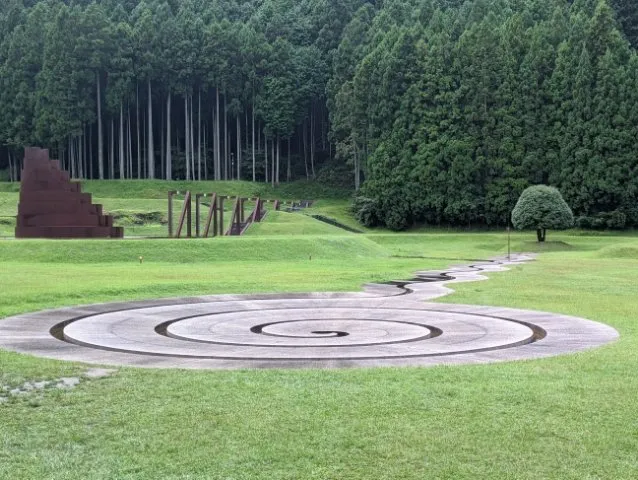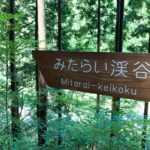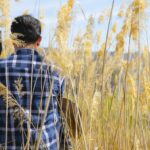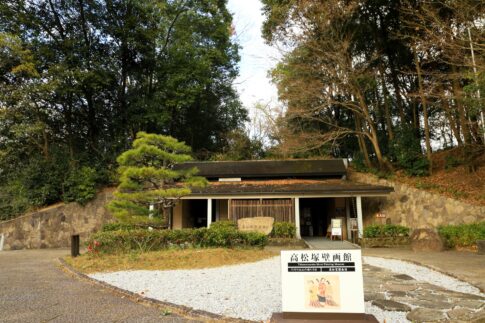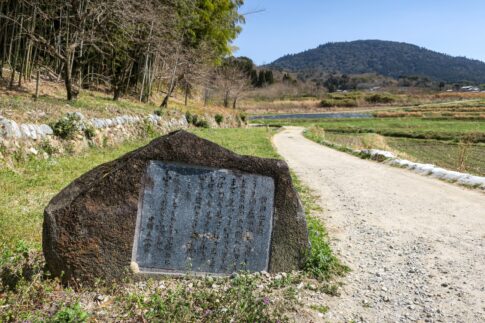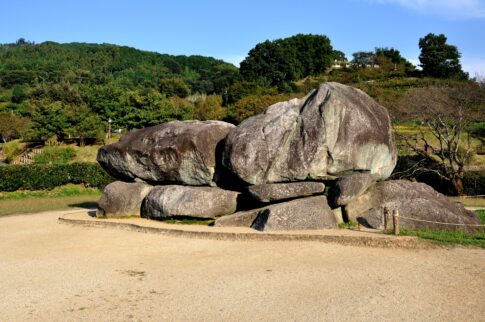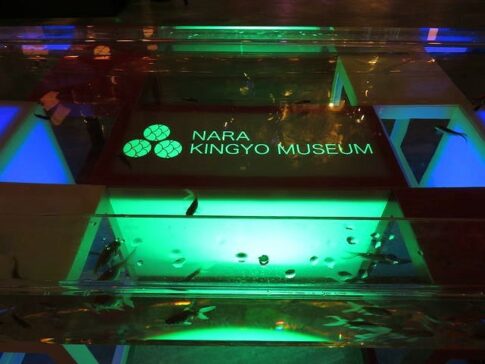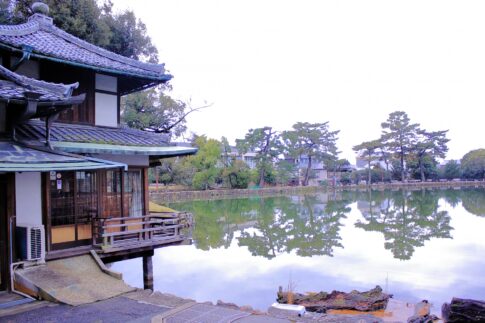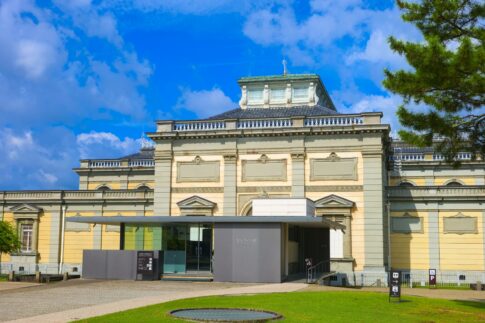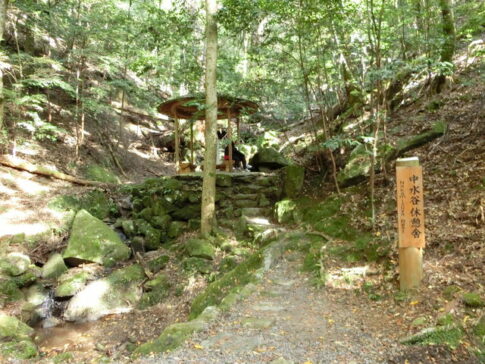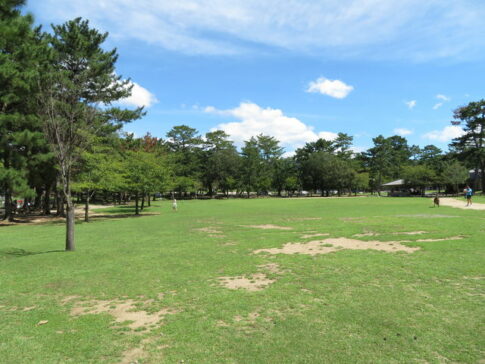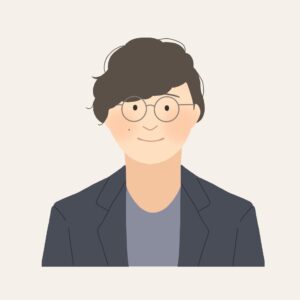Have you ever been to Murou Art Forest?
It is one of the interesting attractions in Nara.
Tourists are likely to have images of deer or temples about Nara. However,there is also some places where you can enjoy art quietly and Murou Art Forest is a that kind of spot.
The “park” spreads out on a hill overlooking the Murouji Temple in the distance.
A number of monuments designed by Dani Karavan, one of the world’s leading experts in environmental art, create a beautiful corridor among the greenery.
This is where it intersects with the line 34°32′ north latitude, known as the Path of the Sun. We will explain more about this place.
What you need to know before visiting Murou Art Forest
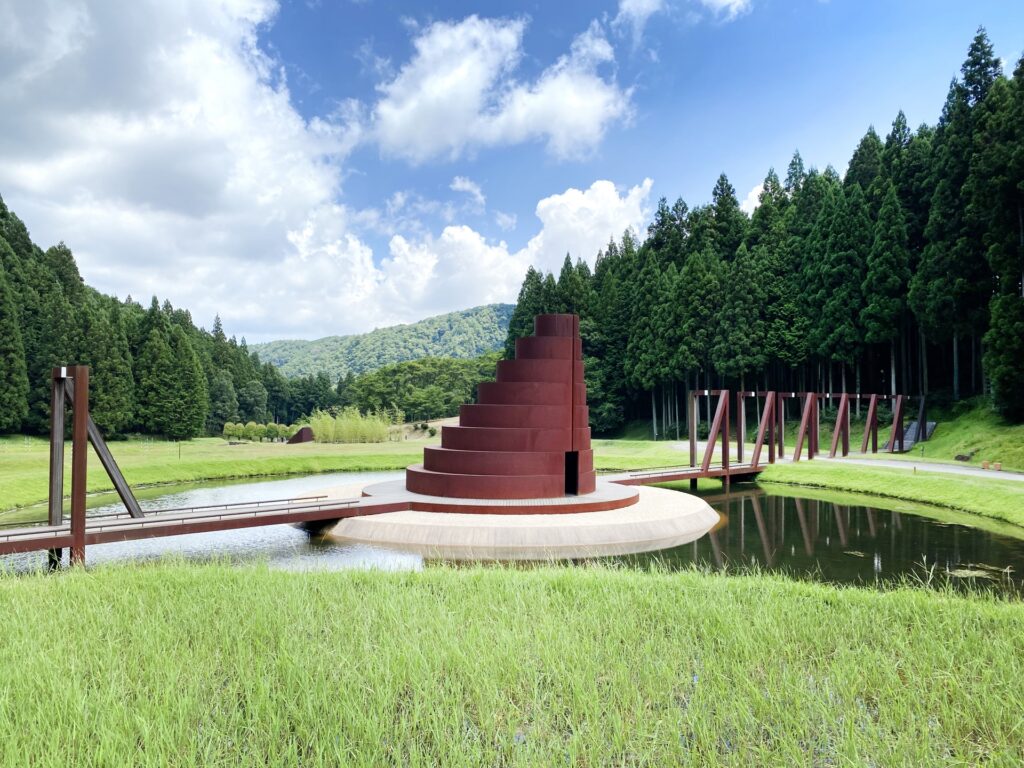
・Basic Information
Murou Art Forest, a park in harmony with the natural environment.
In 1997, with the support of the National Land Agency, the “Muro Art Arcadia Plan” was formulated as a depopulation countermeasure.
Based on the “Forest Corridor Plan” by Takekichi Inoue, a shadow carver from the village, the plan promotes village development from the perspective of culture and art, and the fusion of public works and art as a pillar of the promotion of kushigyo.
The prefectural government formulated the “Our Town’s Slope Improvement Composition Plan” in 1998 in order to develop the public country using the former landslide control sites.
The plan is based on the landslide prevention plan.
In this plan, park use was considered from the perspective of landslides and regional development.
・About the Facility
This facility was developed as a symbolic project of the Art Arcadia Project, and is the counterpart of the Road Station (the Road Station was created in the image of “earth” while this park was created in the image of “heaven”).
(While the Road Station was created in the image of “earth,” this park was created in the image of “heaven.)
The entire space is a sculpture by Dani Karavan, based on the concept of sculptor Takekichi Inoue (who passed away in 1997).
Sculptor Dani Karavan has supervised the design from the viewpoint of landslide prevention and regional development (monument on the mountain concept), utilizing the site after the landslide countermeasures.
Therefore, in the development of the park, the project method of a park (country park) was adopted, and thus the name “mountain-top park” was unavoidably used. However, the nature of the park is different from that of a regular park, and the completed product is a work of art by Dani Karavan.
Therefore, while clarifying the concept of the park as an “Art Forest (ArtForest),” the park is currently managed with great care, although there are restrictions on its maintenance as a work of art.
The spiritual culture is inherited from ancient times as an irreplaceable asset.
To convey a message to those of us living in the present, Takekichi Inoue, a shadow engraver from the village, conceived the “Forest Circle Project” to turn the entire village into a field museum, or art museum, as a work of life and death.
As the monument closest to the sky, facing the village of Muro and on the line of the path of the sun, which is associated with the belief in the sun, the “Forest Circle Plan” was conceived.
The “Monument on the Mountain” was conceived as the closest monument to the heavens, facing the village of Muro and along the path of the sun, which is associated with the sun worship.
・History
1998.11.2
First visit to Karavan Murou Village.
1999.7.12
Caravan’s second visit to Muro Village. Formal request for the “Monument on the Mountain” concept.
2000.6.12
Outsourced the basic design of the Monument on the Mountain to Spatial Design Consultants.
2001.3.30
Basic design work for the Monument on the Mountain was completed.
Caravan proposed specific details of the basic design and an estimated project cost.
and estimated project cost.
2001.11.26
Sixth visit to Karavan.
The layout and size of the first lake revetment, the island, and the Visitor Center were discussed. Simulation of the layout and size of the first lake revetment, islands, and visitor center.
・Dani Karavan (1930~)
TANTRAPAYAN is an Israeli environmental sculptor known for his grand-scale outdoor works that incorporate the environment of the exhibition site, such as cities and deserts, into his artwork. His works are not only made of concrete and stone, but also of sunlight, trees, grass, water, wind, and wind. His works are not only made of concrete and stone, but also of sunlight, trees, grass, water, wind, and other materials.
・Transportation
<In case of using train>
From Osaka/Kyoto, take the Kintetsu limited express, Hayashibara class, 7 minutes on the local train, and get off at Yuseguchi-Ono Shimomoto, or from Tokyo/Nagoya, take the Kintetsu limited express, change to Nabari class, 10 minutes on the local train, and get off at Yuseguchi-Ono.
<In case of using a car>
From Tokyo, Nagoya, Osaka, Kyoto, 13 km from Hari IC on Meihan National Highway
From Meihan National Highway, Kokura IC, 15km from each direction on Nakamanami Road
・Admission to the Park
Opening Hours: Admission until 30 minutes before closing time
April – October (10:00 – 17:00)
March, November and December (10:00 – 16:00)
Admission fee Adults 410 (200 yen for high school students, free for junior high school students and younger)
Closed
Tuesdays (or the following day if Tuesday is a national holiday) and December 29 through the end of February.
The park may be closed temporarily due to weather conditions.
Visiting fee
410 yen per person (200 yen for high school students, free for junior high school students and younger)
Location of the museum
Muroo, Uda City, Nara Prefecture 633-0421
181 Muro, Uda City, Nara Prefecture
※The information and photos may not be the most up-to-date. Please be sure to check the information by yourself before using the site.
Summary
Today we introduced Murou Art Forest in Nara.
This place may be not as famous sightseeing spot as Todaiji Temple or Nara Park, but it is very attractive place.
If you are interested in art, you can enjoy the fusion of Japanese and Western culture. Please do not miss it!
